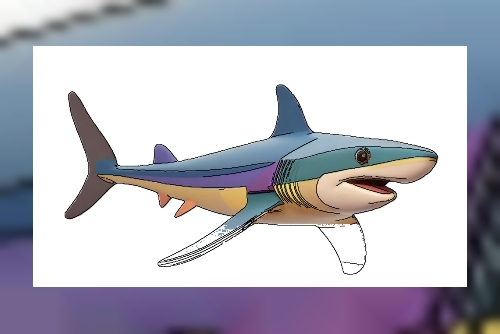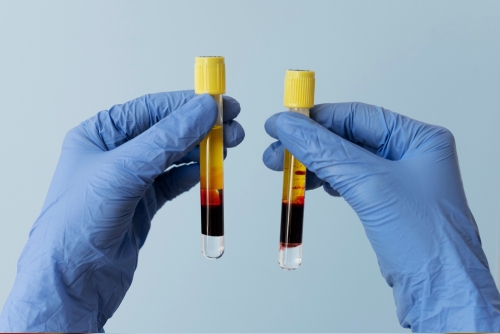Summer, sun, sport.
Summer is the perfect motivation for training. Mood, weather, free time, hope to bring the body back to normal - everyone has their own reasons for regular exercise.
There are also arguments against. For example, a scientific fact: the optimal temperature for running training is 10-12 degrees Celsius.
But what if the temperature outside is below 30 °C?
Should I cancel my workouts during the summer?Of course not.
The heat is not a reason to refuse running or other cardio exercise in the fresh air. Take release only because of health problems - pressure has jumped, you have recently been ill, or you just feel unwell.
If there are problems with the heart, then in the heat they will worsen. I'm not talking about diseases - in principle, you can't train with them. We are talking about functional deviations that often occur, for example, in adolescents: now the heart is overloaded, but with age everything normalizes. In the heat, people with similar deviations are better off taking care of themselves .
In other cases, training to be.
In the active sun, training is more useful - does the body get vitamin D?Do not confuse training with relaxing on the beach.
When it's hot, timing is especially important. It definitely should not be assigned to the middle of the day when the sun is too aggressive. Trying to get both exercise and an even tan at the same time is a sure way to the hospital.
To avoid overheating of the body, sun or heat stroke, choose early morning or evening at sunset. In the most extreme case, during the day you can look for a place for training in the shade.
Such a ban has a simple physiological basis: the load already raises the body temperature, and the active sun makes this process uncontrollable. The heart has to turn on super mode in order to increase blood flow to the skin, releasing heat through it - this is how the body's natural cooling system works.
Each extra degree of body temperature increases the heart rate by about 10 percent - too stressful a test, especially for an unprepared body.
Sunscreens are another enemy of the athlete. Yes, they will save you from burning, but they will create other problems - the film on the skin will disrupt perspiration.
Need to dress warmer - so the training effects will increase?This is a mistake that even professional athletes often repeat. Remember - the shape in the heat should be as breathable and moisture-wicking as possible.
Football players, for example, still have a myth that in order to quickly fight excess weight, you need to train in a “lapdog” - a waterproof and airtight suit.
Sports belts for weight loss, wrapping certain parts of the body with cellophane are tricks from the same series that do not work, but even harm.
Indeed, with them, the body dramatically loses mass, but this deceptive process is not associated with fat burning, but with maximum dehydration of the body. The process of cooling the body is disrupted, the body temperature rises sharply - the liquid is excreted from the body through sweat, the weight is driven off, but it is impossible to lose weight for a long time.
After a few hours, you will make up for the loss of fluid, and the body weight will return to its previous value.
In addition, when overheated, it is more difficult to perform physical work, therefore, in tight clothes, training volumes in the heat will be less than light, which means that the consumption of fats that are spent on muscle work will also decrease.
And the cap - can't you wear it too?Can. A cap or bandana made of breathable materials will protect your head from overheating and the sun, even if it is not very active. You can also use the best cooling neck wrap.
Physiologists do not see this as a problem - heat is removed through the cap with the same success as from the surface of the hair, and people with thinning hair simply need it.
Warm-up in the heat - not needed?Need.
The warm-up is aimed at warming up the muscles, increasing their temperature. Heat (as, by the way, warming ointments) creates a deceptive impression of warming up, but the body cannot be deceived - it tries to maintain a stable temperature in the muscles, regardless of the weather.
An important conclusion: in the heat, the muscles remain cold and they need to be kneaded with the same intensity as in cold weather - in order to achieve a rush of blood and a feeling of slight fatigue.
Is drinking too much during a hot workout harmful?On the contrary, it is necessary.
In the heat, there is an increased load on the heart - all because the body must not only withstand the rhythm of training, but also cool, cool itself. We have many physiological defense mechanisms against hypothermia - we are warm-blooded, and all physiology is aimed at warming. The most common mechanism is shivering, the rhythmic contraction of muscles to release heat.
But for cooling, we have only one mechanism - sweating: moisture appears on the skin, evaporates from the surface of the body - we feel cool. That is why the correct drinking regimen is so important: if there is no normal sweating, then overheating will begin. And he is worse than hypothermia .
Water is the main and only way to make up for the loss of fluid in the body. The higher the temperature around - the more and more often you need to drink, so the body temperature will decrease.
It is best to drink about 0.5 liters of liquid 1.5-2 hours before training, and then take water breaks every 15-20 minutes of training, pouring another 0.1-0.2 of water into yourself.
It is good if it is not plain water (although it is also suitable), but an isotonic drink (it contains different types of carbohydrates - glucose, fructose, maltodextrin) or a solution with a small amount of sugar and citrus juice. So you can replenish not only the loss of fluid, but also the lost minerals.
Another 0.5 liters can be drunk after training. Additional support for the body that has undergone intense training in the heat - a solution of rehydron or another rehydration agent, with which you can restore the balance of salts and minerals, accelerating the recovery process.
One of the most common mistakes newbies make is trying to make their own workout shakes. Water with honey, sugar, other additives - it seems like you want something natural, but this is absolutely not the case when we need natural.
Everything you need for training has already been created in the laboratories; and experiments with natural are more likely to lead to gastrointestinal upset .
What about energy?In principle, energy drinks are the same isotonic drinks, but it is important not to overdo it with them.
You should drink them only before training (it is better to choose natural ones, without caffeine), and no more than 0.5 liters at a time, so as not to drive the body into a debt hole.
When to eat more densely - before or after training?Eat normally, as usual.
There are different theories on nutrition in hot weather. I often come across recommendations to switch to lighter, easily digestible foods, to reduce the amount of protein. But my opinion and the opinion of many professionals: in the heat, nutrition should not fundamentally change.
Although lovers often cool food, they eat the same okroshka. But this does not cool the body much - it's the same as applying ice to the leg for 5 minutes and removing it, the effect is the same. Cold food will enter the body - and we will only spend energy on heating without much benefit .
If the training effects decrease in the heat, then you need to increase the volume and intensity?Not at all.
Hot weather does reduce performance, affecting the effectiveness of training, but this is not a signal to refuse them. But it is not a reason for violence against oneself.
Every working minute costs the body extra effort and exhausts it, therefore, on the contrary, it is important to support it by reducing the intensity and / or volume of work.
According to the training format (volume, intensity), everyone is guided by personal goals. But if the lesson is in the heat, then it is better to work short and intense. Prolonged exposure to the sun - even without exercise - still affects the body .
The rules are simple - keep the selected mode (it is better to do it with a heart rate monitor), not paying attention to a serious drop in running speed, reduce the training time by a quarter, and take additional pauses.
How to understand that training is harmful?Perhaps the main rule of any workout is to listen to your body and follow its prompts.
The main alarm signal of the body is what is called sunstroke. There are many symptoms: confusion, darkening of the eyes, or, conversely, flashes before the eyes, dizziness, shortness of breath at rest.
A dangerous symptom is acute chest pain, which can radiate to the shoulder blade, left arm, left shoulder. All these are signals: training should be stopped. Otherwise, loss of consciousness, a sharp drop in pressure - and up to a stop of respiratory and cardiac activity are possible. It depends on how far the athlete has gone.
It's important to listen to your body. Fatigue, not adequate to the load received, is also a bad sign. The person did the same job many times in an air-conditioned room or in a cool place - and everything was fine. If it doesn’t work out in the heat or the training is much harder than usual, you need to stop or reduce the intensity.
If during the day these symptoms are gone, then the next day you can go to training - perhaps easier. Check, gradually understand what load is normal.
If problems remain in the evening: loss of appetite, poor sleep or lack thereof, dizziness - these are bells. Then you need a minimum examination of the house: temperature, pressure, pulse. If in the evening at rest the pulse is under a hundred - immediately see a doctor.












